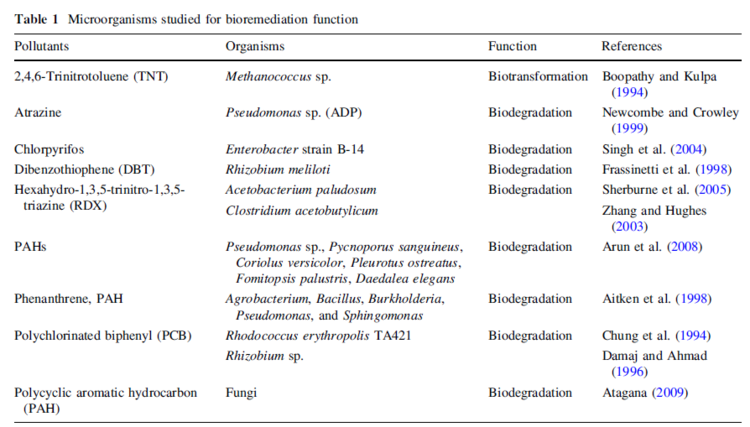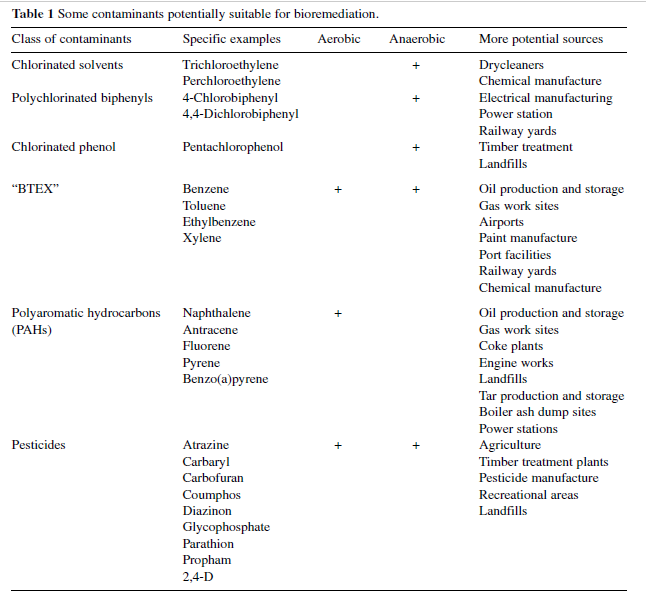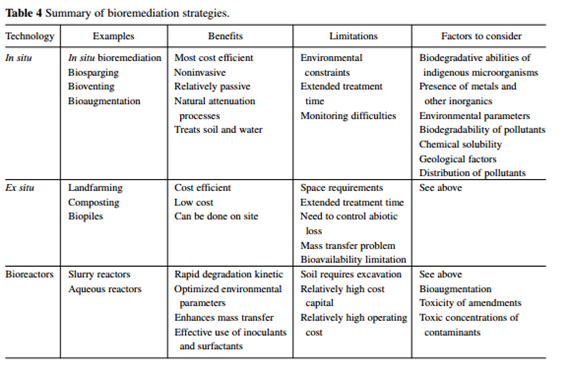Which Best Describes the Bioremediation of Pollutants
Which sentence best describes the bioremediation of pollutants. The treatment of pollutants or waste as in an oil spill contaminated groundwater or an industrial process by the use of microorganisms such as bacteria that break down the undesirable substances.

Advances On Tailored Biochar For Bioremediation Of Antibiotics Pesticides And Polycyclic Aromatic Hydrocarbon Pollutants From Aqueous And Solid Phases Sciencedirect
But in situ bioremediation is also clouded in uncertainty controversy and mistrust.
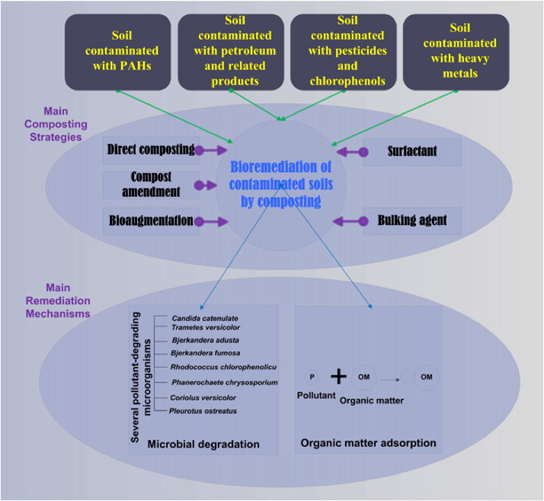
. Bioremediation is the use of microbes to clean up. Bioremediation is most effective when performed on a small scale. D an oil spill is vacuumed off the surface of the water.
Adsorption and biodegradation of organic contaminants and the immobilization mobilization andor transformation of metal loids are the main remediation processes that can be mediated by the action of several microorganisms. It works by altering environmental conditions in a way favorable to the stimulation of microorganisms and thus promote the. Pollution-eating bacteria have gotten the most press at.
Fungal laccases were selected due to their demonstrated utility for bioremediation of a wide variety of industrial pollutants such as bisphenols industrial dyes pharmaceuticals phenolics polycyclic aromatic hydrocarbons perfluoroalkyl and polyfluoroalkyl substances PFASs plastics pesticides and mycotoxin contaminants such as aflatoxins. Indeed one of the factors limiting the biodegradation of. Techniques and Case Studies for Environmental Pollution Second Edition describes the successful application of microbes and their derivatives for bioremediation of potentially toxic and relatively novel compounds in the environment.
Connick Jr Donald Daigle and Kenneth Wunch 6 Fungal biodegradationof chlorinated monoaromatics and BTEX compounds 113 John A. The 1986 Chernobyl nuclear disaster for example was far too catastrophic to be positively affected by bioremediation efforts and. To remediate polluted sites biological processes have many advantages from economic environmental and practical aspects.
This can involve either aerobic or anaerobic micro-organisms that often use this breakdown as an energy source. Such compounds thanks to their amphiphilic moieties favor bioremediation processes by promoting the partitioning of the hydrophobic contaminants into internal hydrophobic cores of surfactant micelles which ultimately facilitates the detachment of pollutants from the sediments. Bioremediation is the use of living organisms such as microbes and bacteria to remove contaminants pollutants and toxins from soil and water.
In most other bioremediation cases nature just needs a little bit of a helping hand. Up to 24 cash back Bioremediation involves the use of biotechnology in order to remove or reduce the concentration of man-made pollutants in the environment. Bioremediation can either be carried out ex situ or in situ depending on several factors which include but not limited to cost site characteristics type and concentration of pollutants.
In the Microbial Bioremediation or Non-metals book expert international authors exhaustively review this topic from a biochemical and genetic viewpoint providing a timely overview of current research. There are two main types of microbial. Bioremediation stimulates the growth of certain microbes that use contaminants as a source of food and energy.
The first 8 chapters of the book focus on current knowledge on microbial biodegradation of various organic pollutants chloroethenes steroids organophosphoric. B detergents are added to water to break down oil. A bacteria are used to decompose an oil spill.
Remediation of polluted sites using microbial process bioremediation has proven effective and reliable due to its eco-friendly features. This volume from the. Bioremediation uses micro-organisms to reduce pollution through the biological degradation of pollutants into non-toxic substances.
Organic pollutants 79 Ian Singleton 5 Formulation of fungi for in situ bioremediation 97 Joan W. Bioremediation is a process used to treat contaminated media including water soil and subsurface material by altering environmental conditions to stimulate growth of microorganisms that degrade the target pollutants. Research on bioremediation is heavily focused on stimulating the process by.
Buswell 7 Bioremediationof polycyclic aromatic hydrocarbons by ligninolytic and non-ligninolyticfungi 136. Bioremediation is a process which occurs either naturally or is mechanically introduced to consumebreakdown the environmental pollutants to reduce the concentration of hazardous waste at a contaminated site. In the first chapter of this book readers gain comprehensive knowledge on several methods of bioremediation in-situ and ex-situ of hazardous pollutants.
It is a type of waste management technique which involves the use of organisms to remove or utilize the pollutants from a polluted area. Microbial Biodegradation and Bioremediation. It is usually done in a non-sterile environment in such a way that the microorganisms which are introduced in it get adapted to the local ecosystem.
Most bioremediation is inadvertent involving native organisms. C an oil spill is ignited and allowed to burn. Edited by Surajit Das Edited by Hirak Ranjan Dash.
Bioremediation is a biotechnical process which abates or cleans up contamination. Bioremediation is one process for handling waste and toxic pollutants. Microbes are very small organisms such as bacteria that live naturally in the environment.
Contaminated soil and groundwater. Microorganisms and sometimes plants or fungi are used to trap or break down the contaminants into simpler less harmful substances such as carbon and water. Bioremediation Technologies For Polycyclic Aromatic Hydrocarbon Compounds 58 In situ bioremediation--the use of microorganisms for on-site removal of contaminants--is potentially cheaper faster and safer than conventional cleanup methods.
Microbial bioremediation is the use of microbial metabolism to remove pollutants. Chapter 2 describes in detail the persistent organic pollutants POPs and other toxic chemicals associated with production use and disposal of certain organic chemicals. There are several remedies where contaminated water or solid is purified by chemical treatment incineration and burial in a landfill.
The oldest and most successful example comes from sewage treatment Bioremediation has been used to remove agricultural chemicals that leach from soil into groundwater and the subsurface.

Logistics Quote Change Your Life Quotes Health Quotes Inspirational Quotes
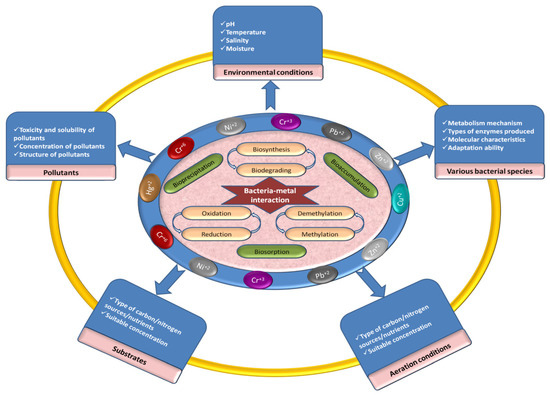
Microorganisms Free Full Text Bacterial Biosorbents An Efficient Heavy Metals Green Clean Up Strategy Prospects Challenges And Opportunities Html
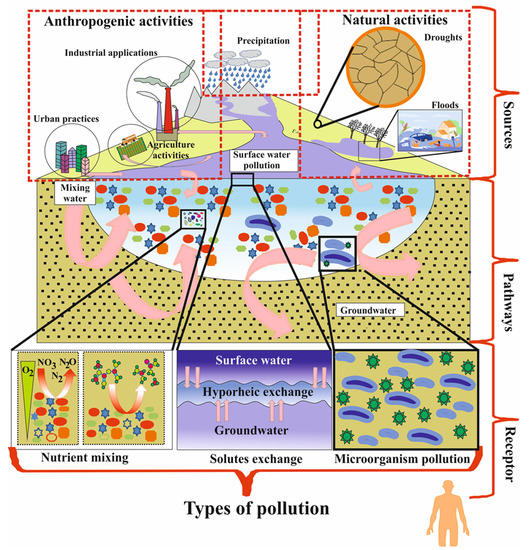
Water Free Full Text Various Natural And Anthropogenic Factors Responsible For Water Quality Degradation A Review Html

Trends In Predictive Biodegradation For Sustainable Mitigation Of Environmental Pollutants Recent Progress And Future Outlook Sciencedirect

Enhancing Microbial Pollutant Degradation By Integrating Eco Evolutionary Principles With Environmental Biotechnology Trends In Microbiology

Microbial Based Bioremediation Mechanism Download Scientific Diagram

A Strategies For Bioremediation Of Organic Contaminants Download Scientific Diagram

Rhizobiont In Bioremediation Of Hazardous Waste Ebook By 9789811606021 Rakuten Kobo United States
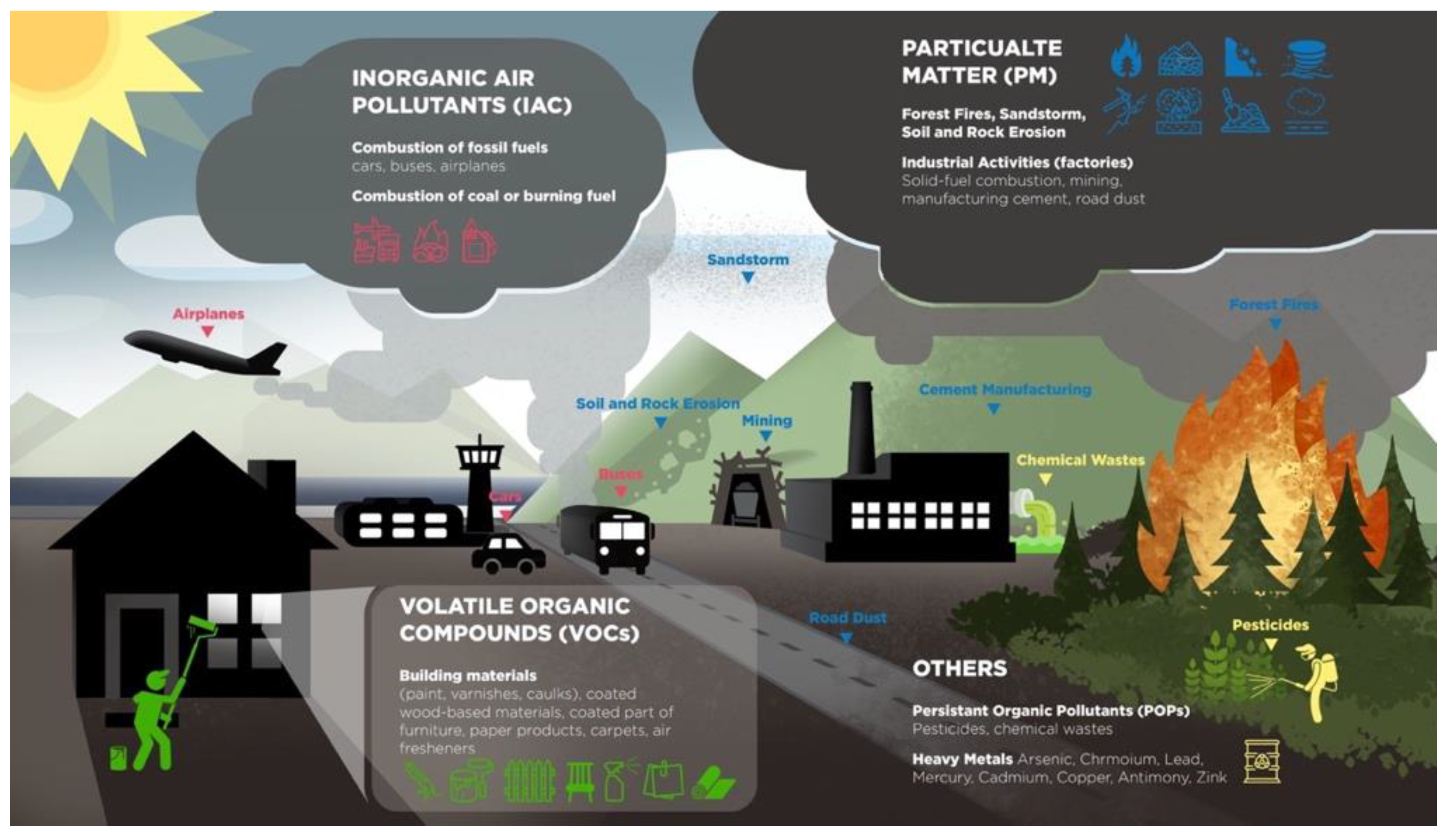
Environments Free Full Text Phytoremediation The Sustainable Strategy For Improving Indoor And Outdoor Air Quality Html
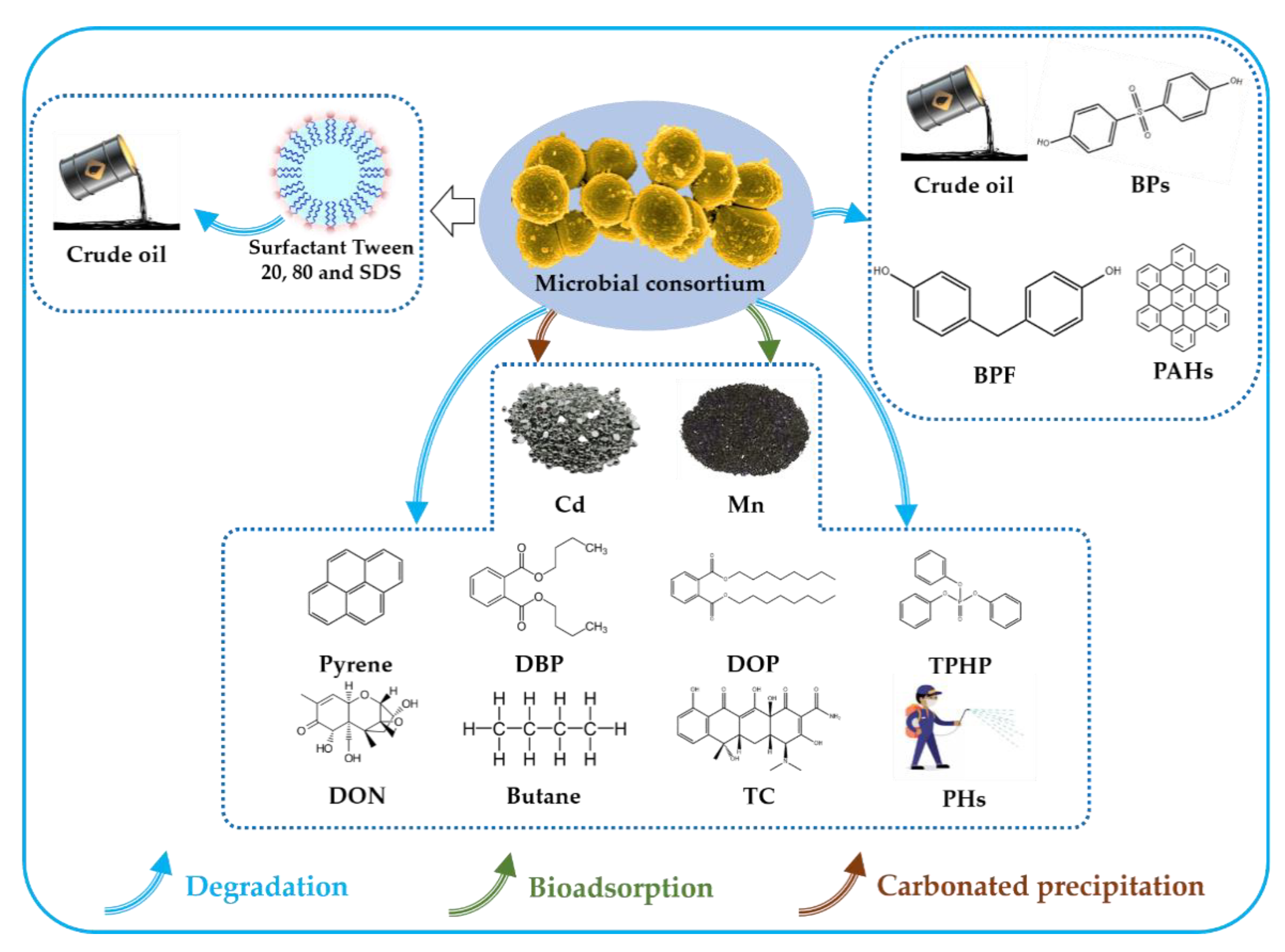
Microorganisms Free Full Text Microbial Consortia Are Needed To Degrade Soil Pollutants Html

Bioremediation Process Types Of Bioremediation Examples
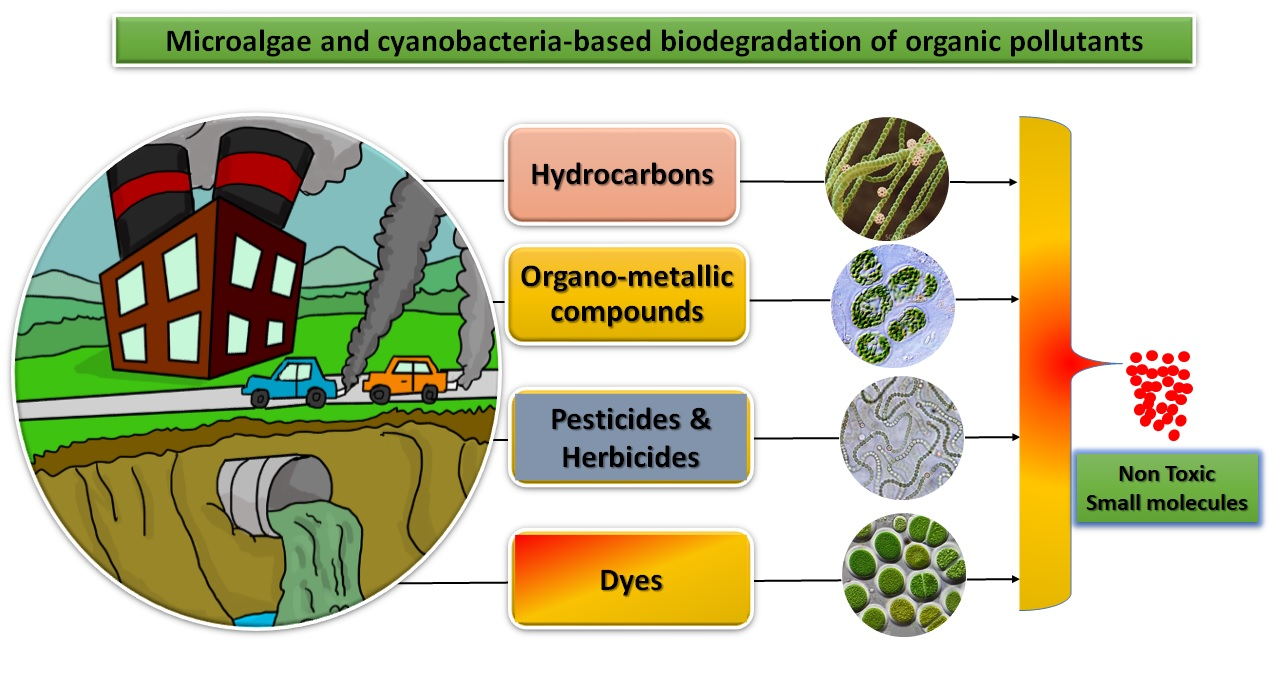
Molecules Free Full Text A Review Of Microalgae And Cyanobacteria Based Biodegradation Of Organic Pollutants Html

Trends In Predictive Biodegradation For Sustainable Mitigation Of Environmental Pollutants Recent Progress And Future Outlook Sciencedirect

Sustainable Remediation Of Hazardous Environmental Pollutants Using Biochar Based Nanohybrid Materials Sciencedirect
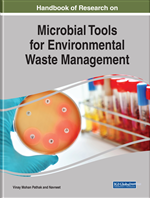
Bioremediation Of Environmental Pollutants Environment Agriculture Book Chapter Igi Global
